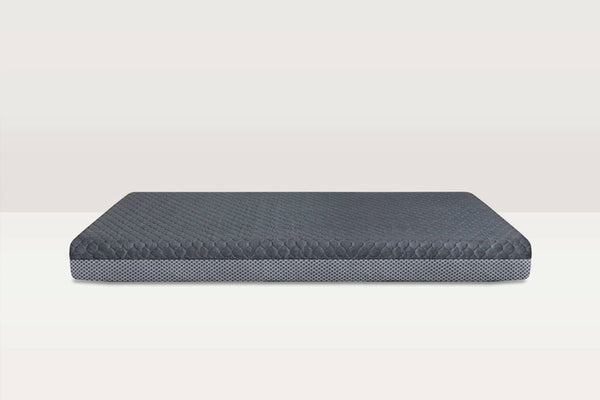How to Prepare Your Cab for a DOT Inspection

As a truck driver, you are more than likely very familiar with the US Department of Transportation (DOT). It is the duty of DOT to ensure that America’s highways and transportation systems are safe and accessible nationwide. One of the ways in which they accomplish this is by conducting driver and vehicle inspections. So, again, as a truck driver, you have most definitely experienced one of these roadside inspections. If you are driving a CMV, it is required that you not only complete a DOT inspection, but also pass said inspection. Conducted by a licensed professional, these inspections are meant to ensure that both the vehicle and all of its parts and accessories are in good condition, safe to use, and working correctly. Thus, it is essential to keep your cab prepared for such an inspection. In this guide, we provide you with detailed information regarding DOT inspections and how you should prepare your cab ahead of one.
Contents
The Levels of Truck Inspections
While each state runs a DOT that conducts these safety check-ups, there are other organizations involved. One such organization is The Federal Motor Carrier Safety Administration (FMCSA), which is a department under DOT that oversees all inspections. The FMCSA’s primary mission is to prevent commercial vehicle-related accidents that could result in injury or fatality and requires that a commercial motor vehicle and its specified components must be inspected at least once a year. These inspections can be done at any time, but the Commercial Vehicle Safety Alliance (CVSA) conducts its annual “Roadcheck”, where 10,000 federal, state, provincial, and local truck and bus inspectors hold heavy vehicle inspections throughout much of North America over a 72-hour period. When you get down to it, the purpose of a DOT inspection is to simply increase roadway safety.
The North American Standard Inspection Program consists of six levels of inspections that officials can perform on a vehicle or driver to make sure certain laws and regulations are met. Because any of these levels of inspection can be issued, it is worthwhile to be familiar with all six.
- Level 1: The North American Standard Inspection is the most thorough inspection, seeing an officer examine the entire vehicle for worn-out or damaged parts. The officer will, also, speak with the driver while checking for signs of alcohol and drug consumption, improper seat belt use and appropriate documentation.
- Level 2: What is called the Walk-Around Driver/Vehicle Inspection is an inspection similar to Level 1, without the inspection of components under the vehicle. Instead, an officer will walk around the vehicle during inspection, and then check the driver’s paperwork and credentials.
- Level 3: The Driver-Only Inspection focuses solely on the driver’s credentials and paperwork.
- Level 4: A Special Inspection is relatively uncommon, and is usually conducted as a one-time examination of a specified item for research purposes.
- Level 5: The Vehicle-Only Inspection uses the same criteria as a Level 1 inspection, but without the presence of the driver.
- Level 6: An Enhanced NAS Inspection for Radioactive Shipments is specific to CMVs hauling highway route-controlled quantities (HRCQ) of radiological shipments. This level of inspection includes enhanced OOS criteria, radiological requirements and other improvements to a Level 1 inspection.
Preparing for a DOT Inspection
A DOT inspection typically lasts less than one hour if the vehicle has been properly maintained and everything is in working order. It is important to keep in mind that a DOT officer can pull anyone over, anywhere, at any time. They don’t need a reason to conduct inspections. Therefore, it is imperative to be prepared. Some tips that drivers follow to prepare for inspections include: regularly cleaning equipment, implementing a preventative maintenance program to keep the vehicle in good condition, performing pre-trip inspections to check for problems, having the company name and USDOT number visibly displayed on the truck, understanding inspection procedures, securing shipments properly, and most importunately, making certain all of the correct paperwork is in order for inspection.
Keep Documents Updated and Available
The majority of the various commercial vehicle inspections require proper documentation. It is crucial to keep the following records current:
- License
- Electronic Logging Device (ELD)
- Record of Duty Status (RODS)
- Hours of Service (HOS)
- Driver Vehicle Inspection Report (DVIR)
Certified DOT inspector, Andy Blair, suggests that in order to make every document easy to find and inspect, they should be placed in a binder or a folder.
Conducting a Pre-Trip Inspection
A pre-trip inspection is essentially a thorough examination of a truck to make sure everything is functioning properly. By practicing this procedure, there is an opportunity to address any safety issues or potential problems before you hit the road. DOT pre-trip inspections are actually required by law and are essential for trucking companies and drivers to maintain a safe and efficient trucking fleet. Drivers must complete these inspections before they start their shift and once every 24 hours while they’re on the road.
Failing to complete a DOT pre-trip inspection checklist can have serious consequences, especially if pulled over for a DOT inspection. If a driver fails a routine DOT inspection, they are at risk for a written warning, fine, suspension, or even jail time if the infraction is serious enough.
In order to perform a proper pre-trip check, it is helpful to have a checklist of all the points that will be hit during a DOT inspection. Every transportation and logistics company is going to have its own checklist and safety procedures which comply with the FMCSA guidelines, but a basic DOT pre-trip inspection includes checking fluid levels, leaks, tires, 5th wheel, brakes, clutch, shock absorbers, ball joints, kingpins, gauges, lights, and more. While an officer may not enter your vehicle during inspection, it is just as imperative to make sure the interior of a sleeper cabin adheres to DOT regulations during pre-trip checks, as well. Make sure the floors of truck cabins are clean and free from trash or anything that could appear incriminating. It is also important to make sure any semi-truck mattresses in a sleeper cabin are DOT approved and safe for over-the-road travel. Unsure if your truck mattress is DOT approved? Checkout our SleepDog® and BigDawg mattresses – both of which are DOT approved and designed to maximize comfort and minimize motion-transfer while on the road. Once a driver has completed a thorough check, they can log the DOT pre-trip inspection in their log books and be on their way.
The Bottom Line is Preparation and Courtesy
Failing a DOT inspection can result in serious consequences that ultimately affect the driver’s future as a driver. But failure is certainly avoidable if the proper steps are taken. In addition to being prepared, it is very important that drivers are courteous during the inspection. The attitude of the driver can make all the difference. If they are being argumentative with an inspector, the inspector is more likely to nitpick and cite the driver for any minor issue. But a driver with an overall positive and compliant attitude will have a smoother experience. It helps to remember that these inspections aren’t conducted to be a nuisance, rather, they are practiced to promote the safety and well-being of everyone on the road.

